Old foes José Mourinho and Pep Guardiola met again in the Premier League as Tottenham Hotspur faced Manchester City last weekend. Creative tactics from both managers as well as exhilarating VAR-induced drama made the thrilling fixture successfully lived up the expectations.
From Mourinho’s disciplined defending to Guardiola’s inspiring offensive set-up, all were displayed brilliantly in this game. It’s safe to say that this high-octane match was a solace for the fans as the Premier League heading to its first-ever winter break until mid-February. This tactical analysis will inform you how the match unfolded.
Lineups
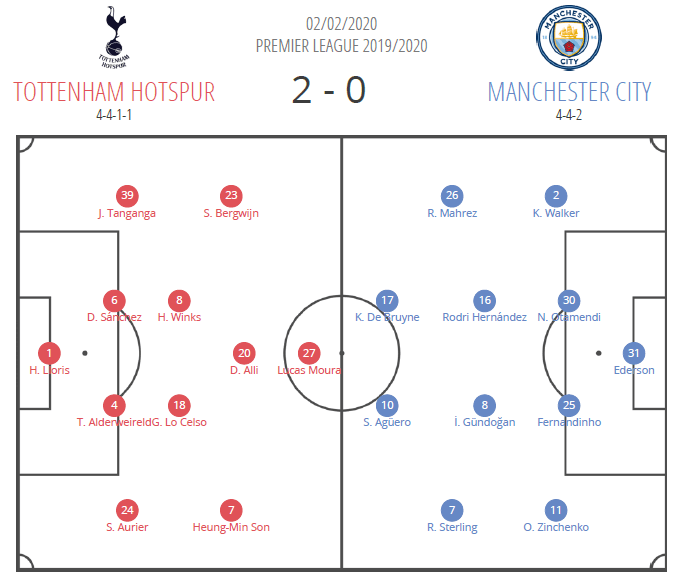
Mourinho fielded his team in his preferred 4–2–3–1. Japhet Tanganga once again was picked to start the game, now partnered with Serge Aurier as Tottenham’s full-back pairing. The trio of Son Heung-min, Dele Alli, and new recruit Steven Bergwijn was chosen to support Lucas Moura upfront. Names like Erik Lamela, Eric Dier, and Tanguy Ndombele had to start the game from the bench.
In the opposite side, Guardiola set his team up in 4–3–3. The 4–4–2 as suggested by Wyscout above was deployed mainly when Manchester City didn’t have the ball; only 34% from the total possession. Nicolás Otamendi and Fernandinho started as the centre-back pairing, with Rodri supporting the duo as a single pivot. Up top, talisman Sergio Agüero spearheaded the attacking line with Riyad Mahrez and Raheem Sterling alongside him. The dugout was filled with names like Gabriel Jesus, Bernardo Silva, and João Cancelo.
Man-oriented defending from the Lilywhites
Despite playing at home, Mourinho picked his signature defensive approach for his team. He set up his team in mid-block 4–4–2 for the entire match against City’s rather offensive tactics. Defensively, Spurs deployed man-oriented defending, especially in the midfield. The objective was to prevent City’s midfielders from building their attacks swiftly through the central lanes.
First, Mourinho asked his forwards to different roles; depending on where the ball is being played. The ball-side forward was instructed to close down City’s on-ball defender in possession. The purpose was to limit the defender’s time with the ball and force him to play rather uncomfortably. Oppositely, the ball-far forward was tasked to close down Rodri; City’s main bridge to the advanced players. The set-up would prevent Rodri from receiving the ball; therefore limiting the Spaniard’s attacking influence.
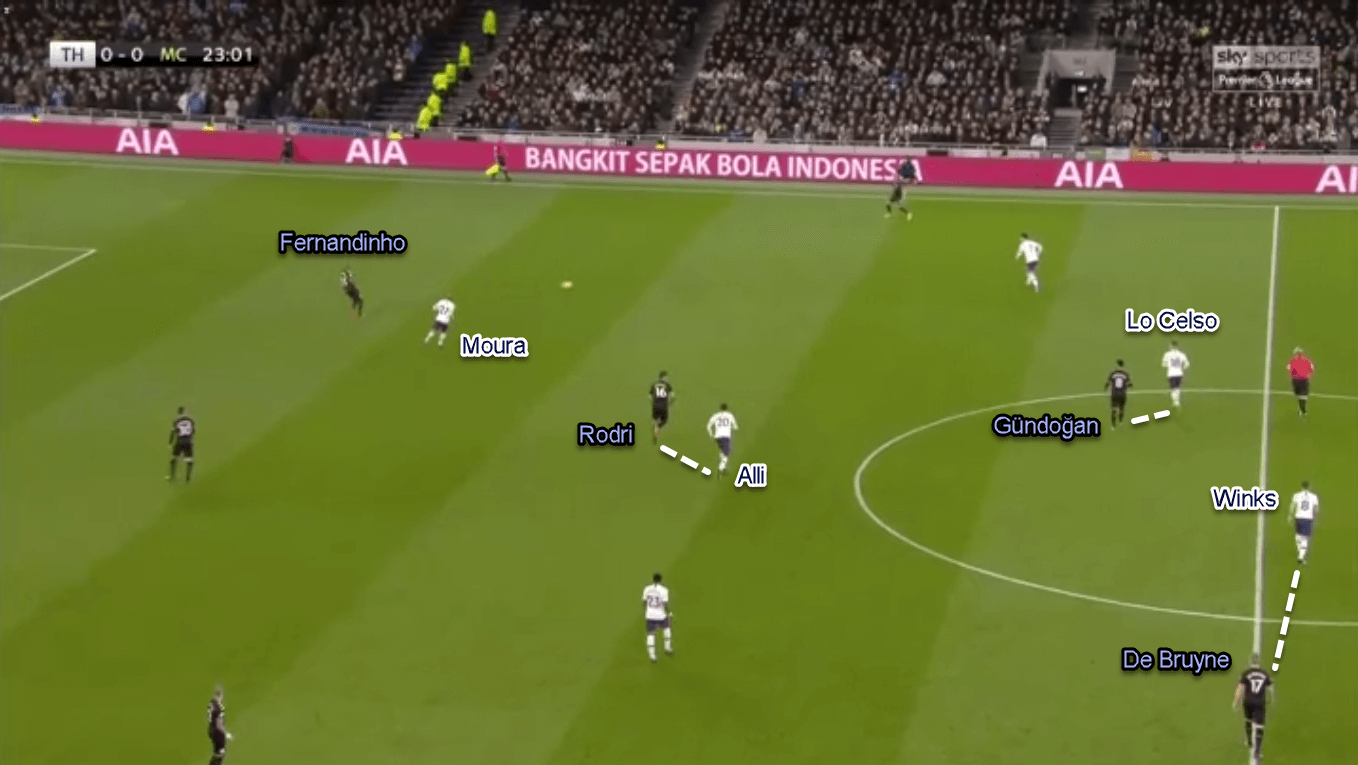
Second, Mourinho instructed his defensive midfielders to mark İlkay Gündoğan and Kevin De Bruyne. Again, the objective was to prevent the City duo from receiving in advanced areas comfortably; thus forcing City to play the ball wide. However, there were no movement restrictions for Harry Winks and Giovani Lo Celso. Both were given the license to rotate sometimes to follow their respective opponent.
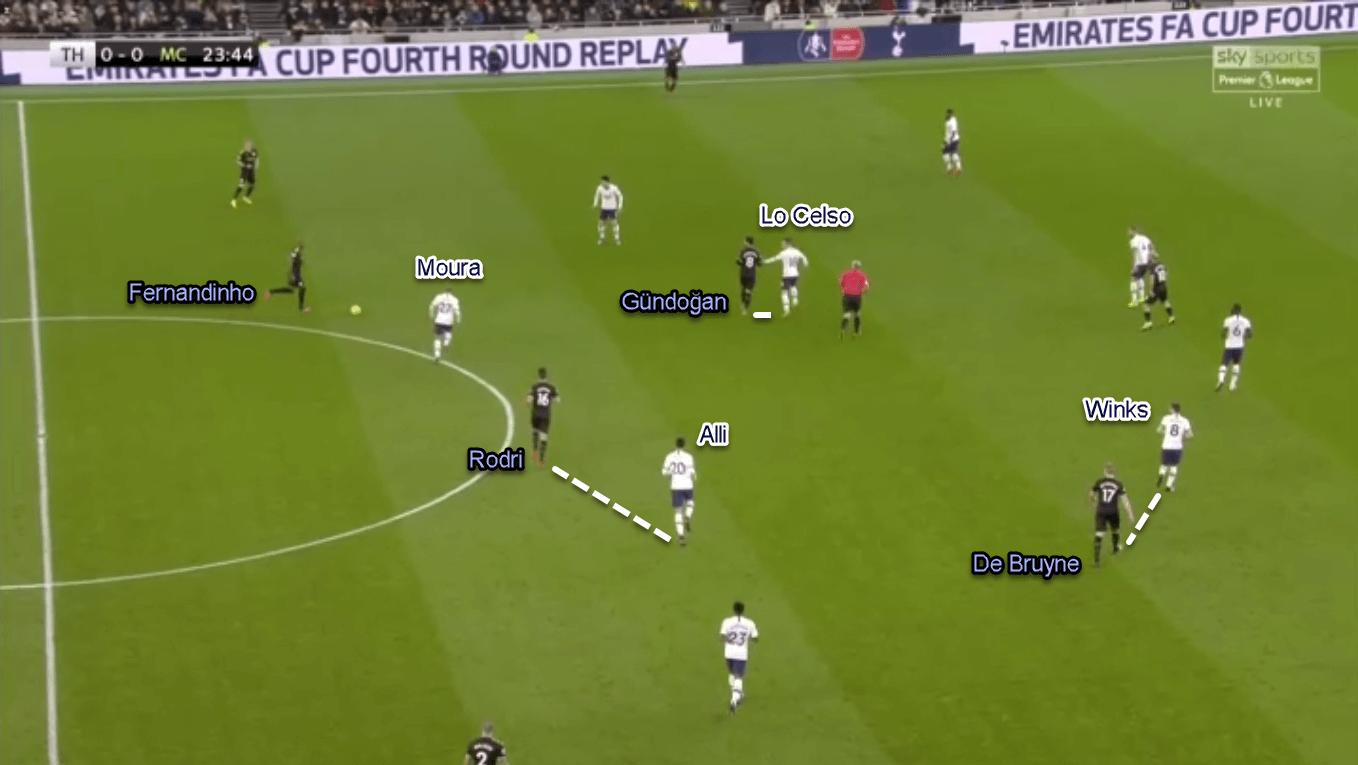
City found their way around Spurs’ defensive approach (part one)
In this part of the analysis, we’re going to take a look at how Guardiola set his team against Spurs’ defensive approach. To overcome Spurs’ man-oriented defending, City used various offensive setups as will be explained below.
City’s main option was by instructing Agüero to make dropping movements from his initial position. Guardiola allowed the Argentinian to drop either centrally or to the half-space.
In the first alternative, both Gündoğan and De Bruyne would drift away from their designated areas; thus pulling their respective markers with them. Their movements would open a forward passing lane Agüero in the central part of the pitch. Behind Agüero, Spurs’ central defenders were tasked to stay in their position rather than following the striker’s movement. This eventually would also create an overload in the midfield for City; with three players against Spurs’ two midfielders.
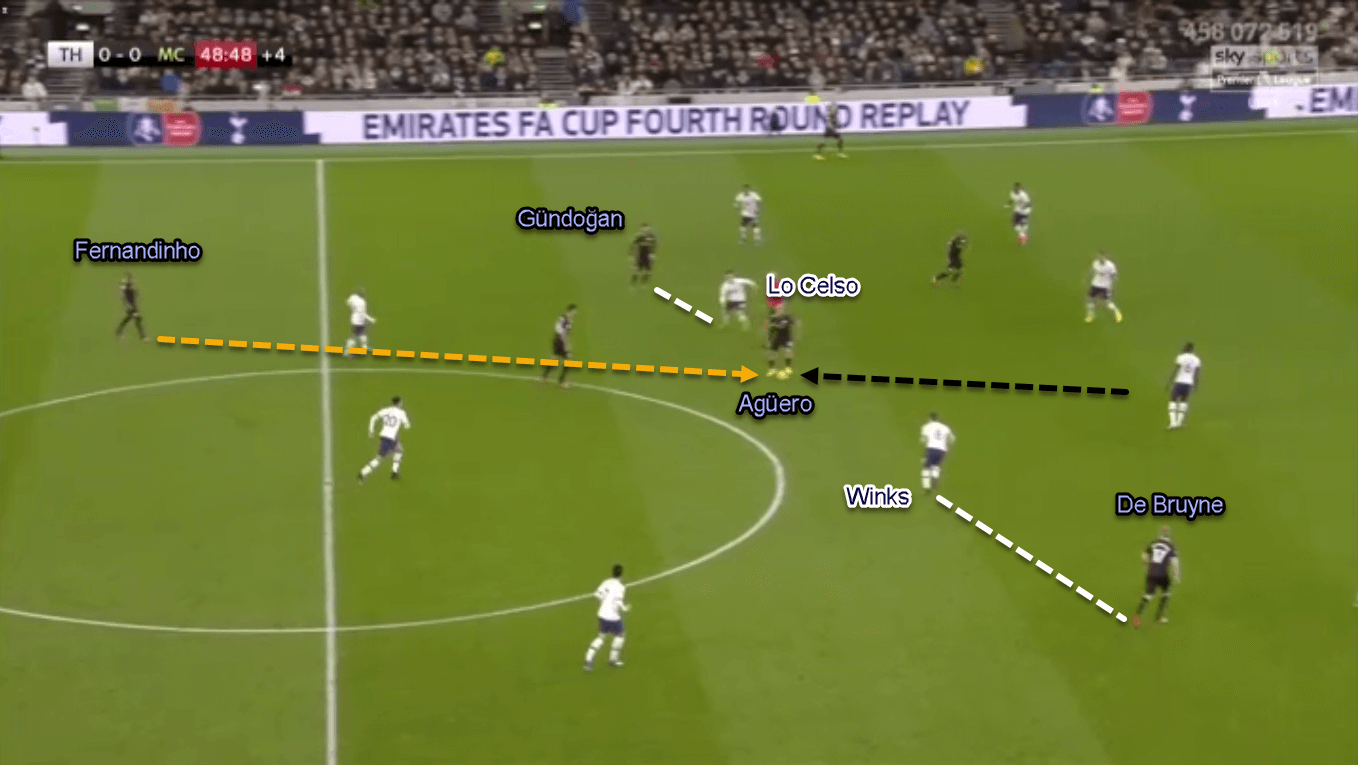
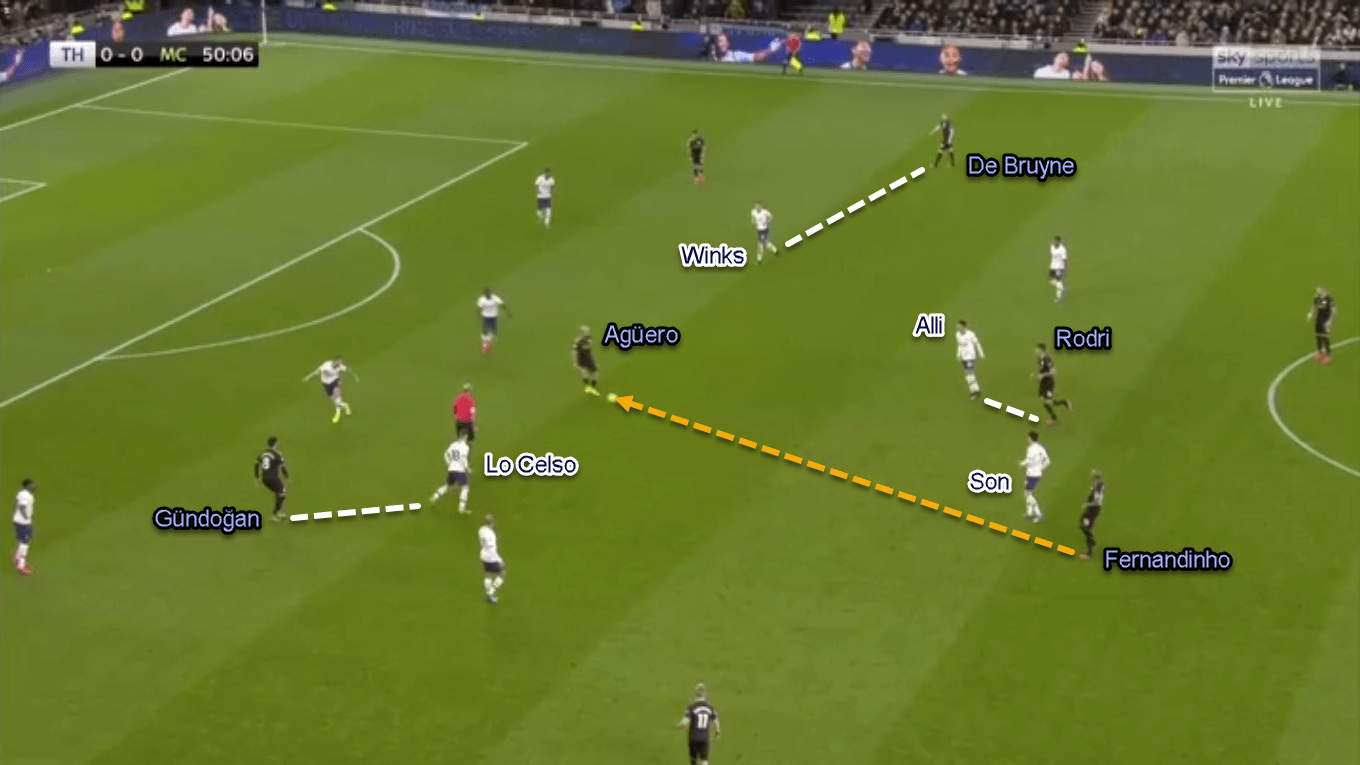
City found their way around Spurs’ defensive approach (part two)
Secondly, Agüero would drop and drift to the left half-space. With Gündoğan and tucked-inside Sterling already situated there, Agüero’s movement would create an overload inside the half-space against Lo Celso. Spurs’ right-flank players — Son and Aurier — were not available freely to help Lo Celso, as Oleksandr Zinchenko occupied the wide-area and pinning both of them. On top of that, Toby Alderweireld was also unable to help his teammate due to his restriction with the backline.
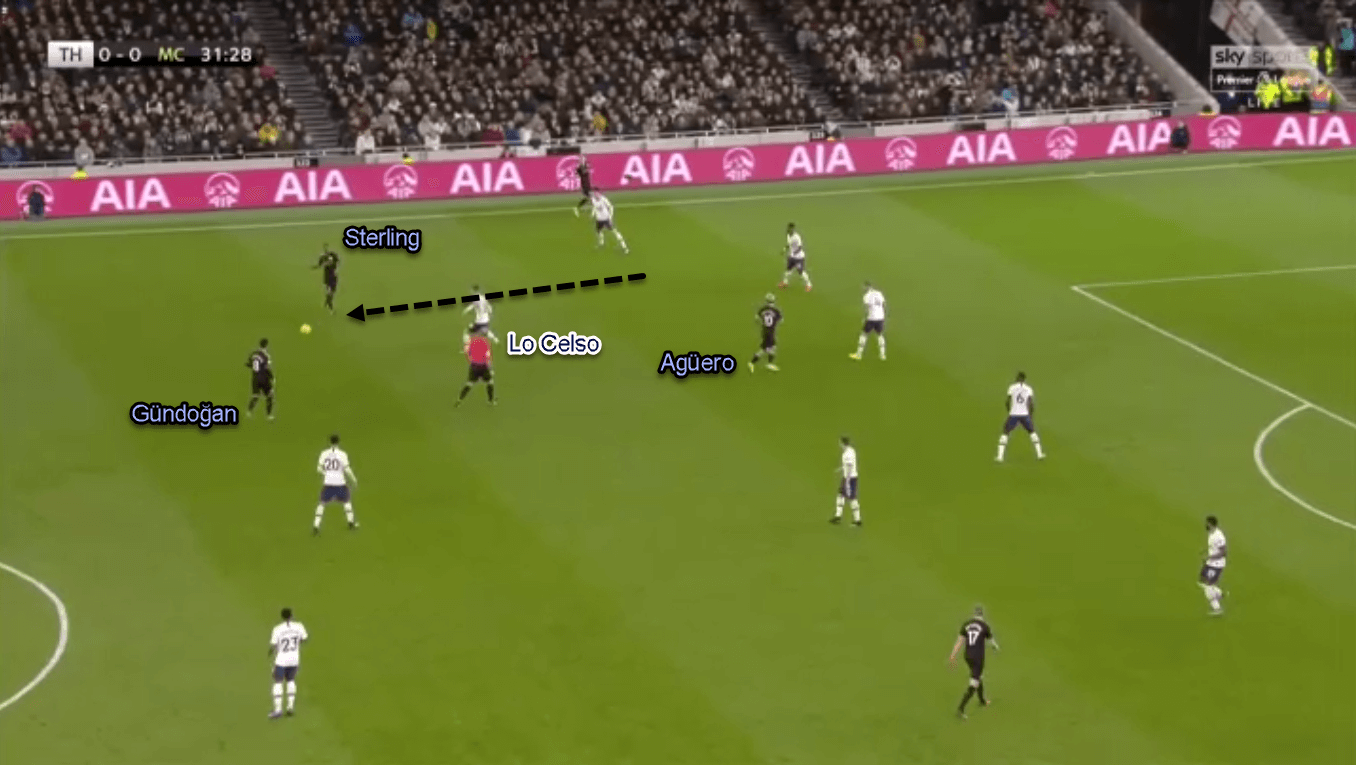
Furthermore, sometimes Guardiola allowed his players to rotate their positions. As examples, sometimes Zinchenko played inside while Sterling moved wide. Not only that, but De Bruyne also sometimes moved to the left half-space; rotating with Gündoğan. The objective was to disrupt the defence and utilising the overload.
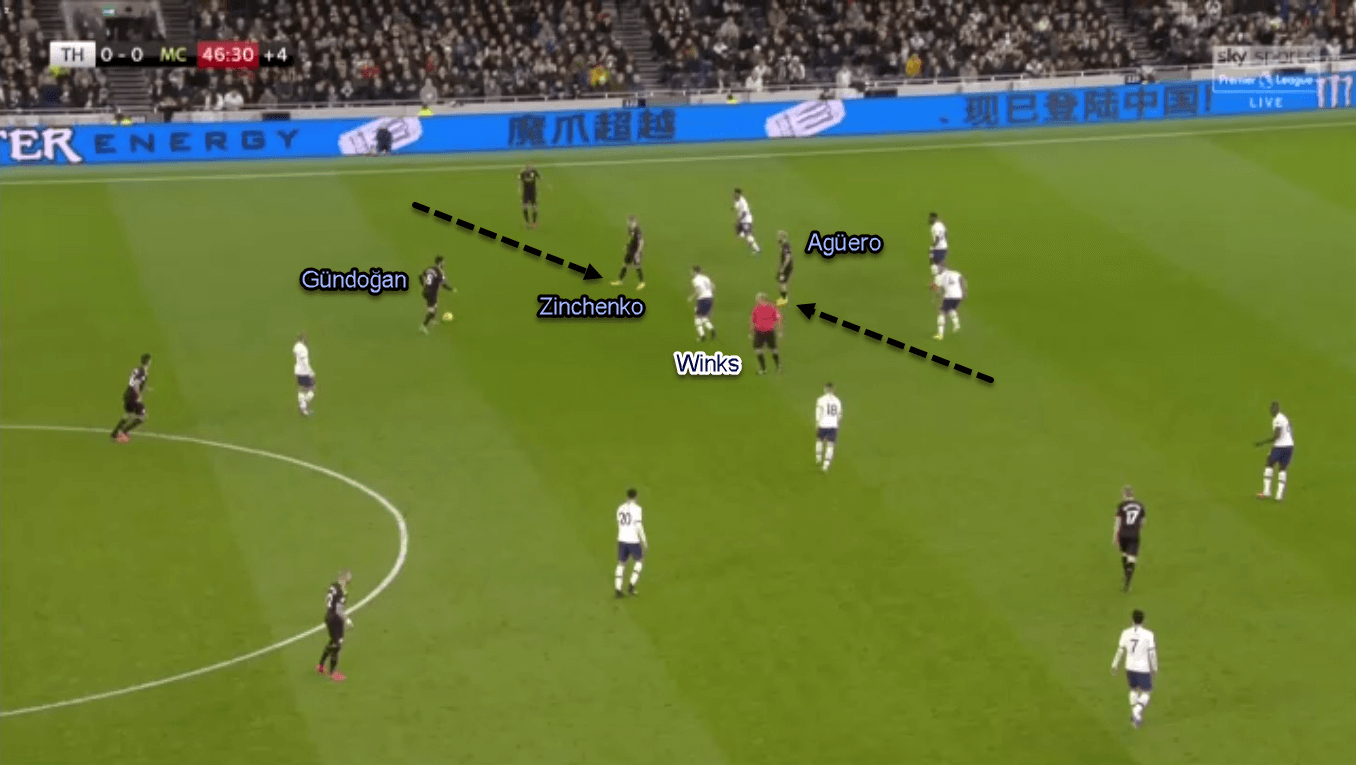
City’s main objective in using Agüero was to send the ball upfield in a rather central area. After that, a combination will be made — particularly with the overload — before the ball moved diagonally towards Mahrez in the right flank.
City found their way around Spurs’ defensive approach (part three)
Last but not least, City utilised Gündoğan to help them progress the ball. As mentioned before, the Citizens allowed Agüero to drop diagonally into the left half-space; sometimes parallel to De Bruyne. Such movement by the forward would attract the focus of Spurs’ ball-side midfielder towards him; especially when he dropped quite deep.
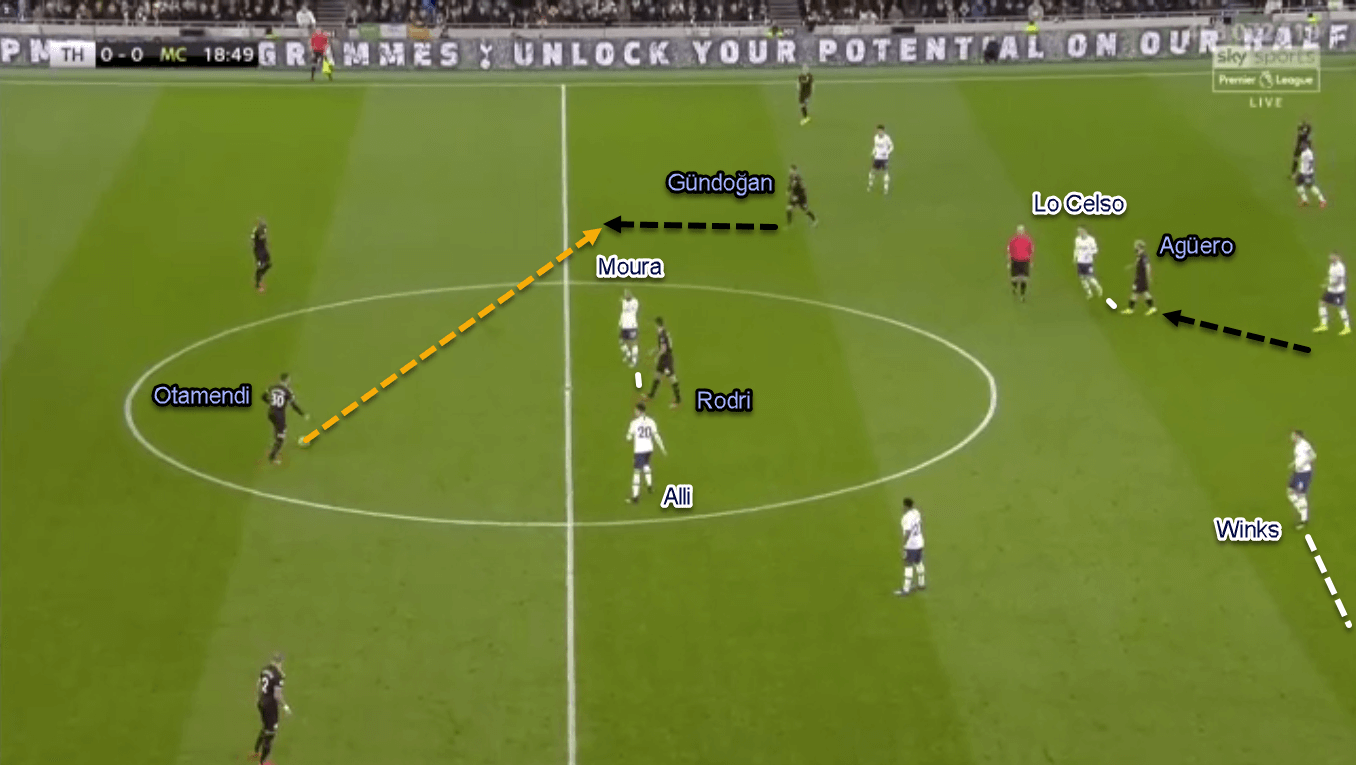
With Agüero being marked by the midfielder, Gündoğan had ample time to drop deeper and offer himself as a forward passing option nearby the halfway line. Due to his movements, sometimes the German could be seen in parallel with defensive midfielder Rodri rather than the more advanced De Bruyne. After receiving in the left half-space, Gündoğan then could spray diagonal passes to Mahrez in the right flank with minimum hesitation. This switch of play then would allow the Algerian to face Tanganga in one-versus-one duels.
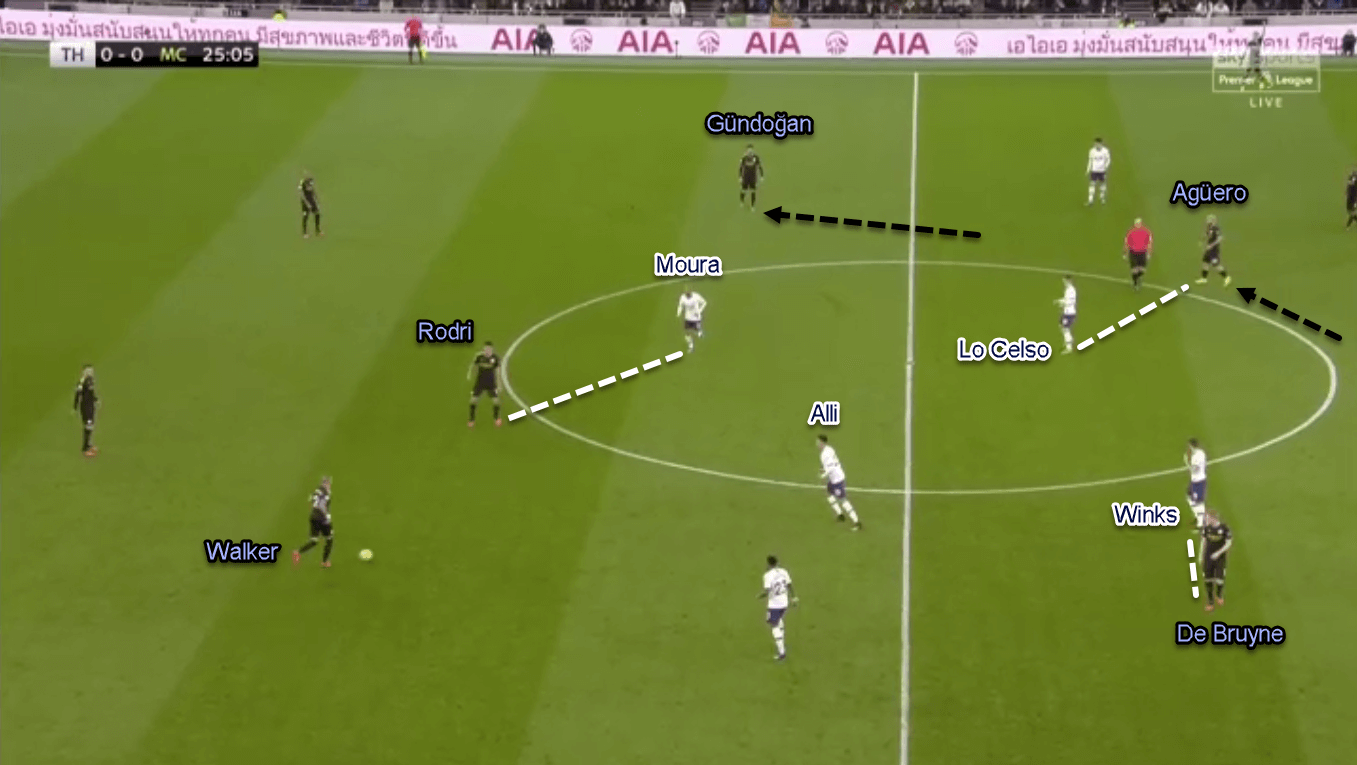
Spurs’ defence in deeper areas
Knowing Guardiola would utilise Mahrez heavily in the final third, Mourinho instructed Tanganga to defend rather aggressively. This means Tanganga would actively leave his defensive line to engage in a one-versus-one duel against Mahrez; even before the Algerian received the ball comfortably.
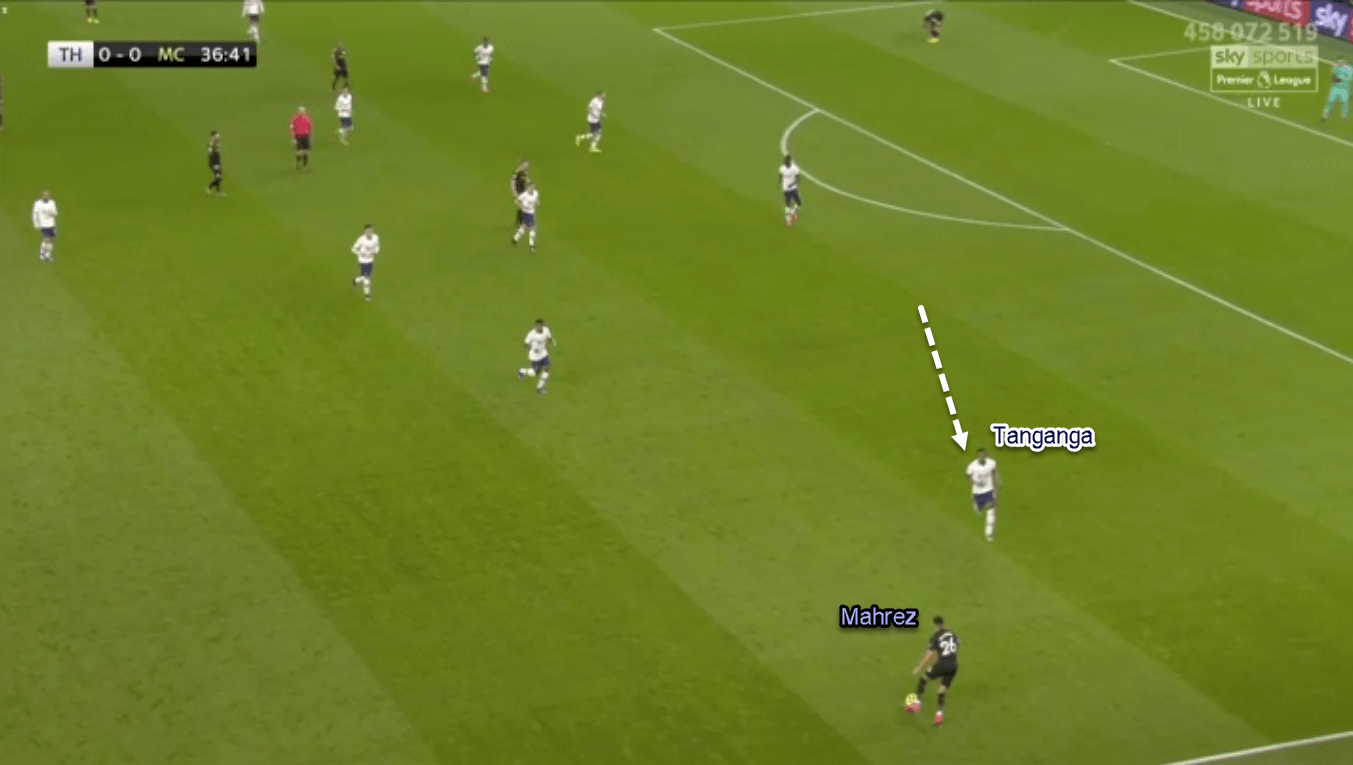
Indeed this would open a gap between Tanganga and Dávinson Sánchez to be exploited by De Bruyne. However, Tanganga’s clever defending often forced Mahrez with limited time and space on the ball. As a result, Mahrez rarely found the Belgian in behind.
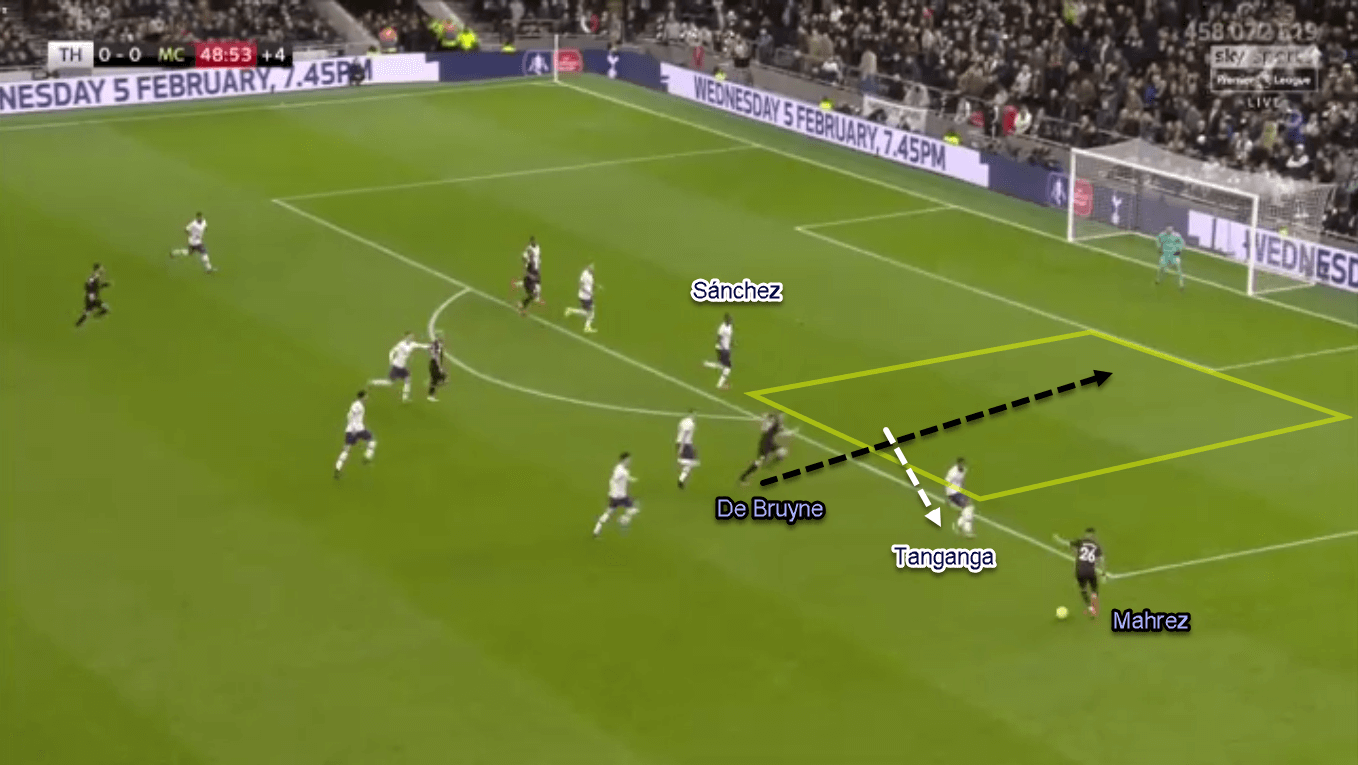
Spurs’ decent mid-block defending sometimes successfully slowed City’s attacks. This would give the home team time to reorganise and sit deeply. When sitting deeper, Spurs deployed a very compact 4–4–2 and allowed the visitors no space in between the lines. Furthermore, this was also the reason why Mahrez was utilised by the Citizens as he would have a lot of space out wide.
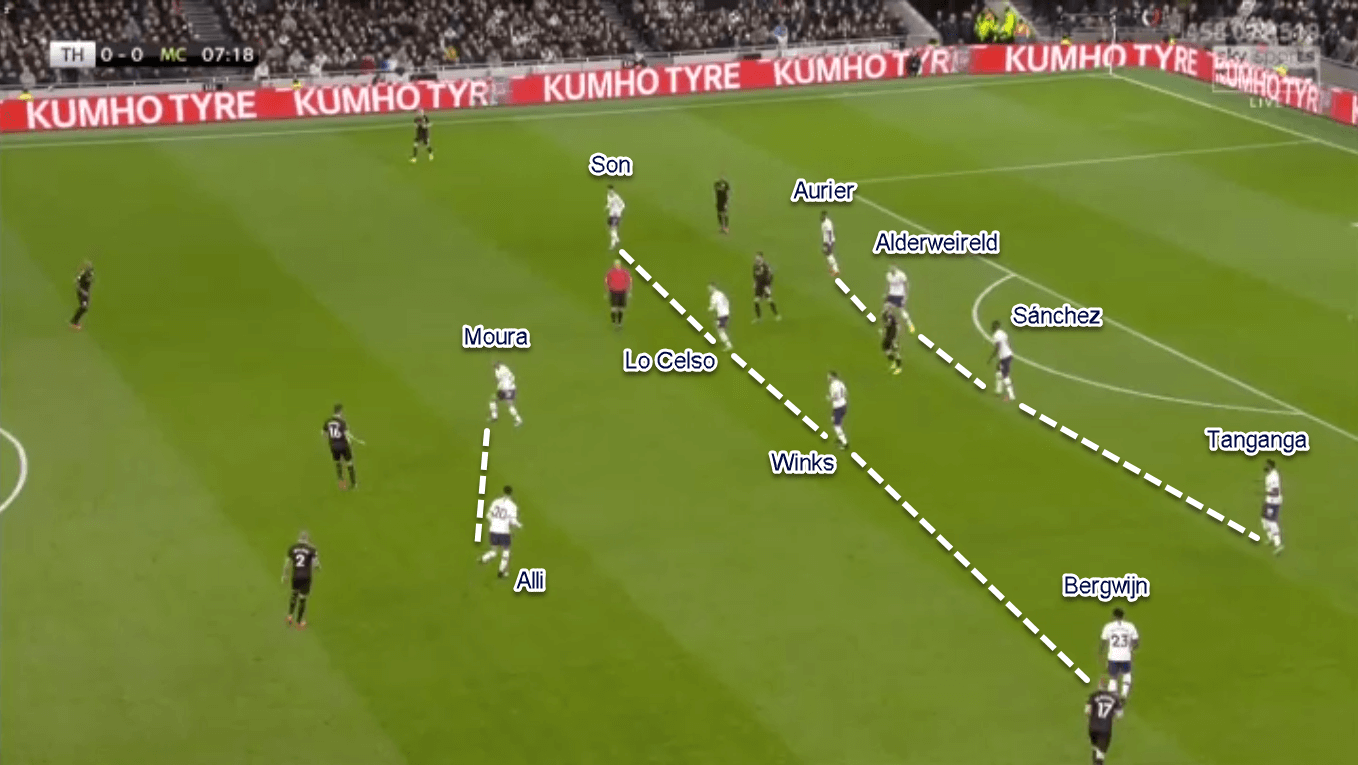
A rather direct offensive approach by Mourinho’s men
As predicted, Mourinho preferred a more direct approach for his team to progress the ball. Per the statistics, Hugo Lloris attempted 18 long passes compared to Ederson’s four. Lloris’ distribution was quite effective as the stats showed 78% successful rate; only four out of 18 missed the target. Lloris usually put the ball to the right-hand side; as proven in the stats by only two of his long passes were aimed at the left-sided players.
City’s left-side was targeted as it was considered the weak spot of the reigning champions. Compared to the more physical right-side defenders in Otamendi and Kyle Walker, City’s left-side was filled by rather makeshift defenders in Fernandinho and Zinchenko.
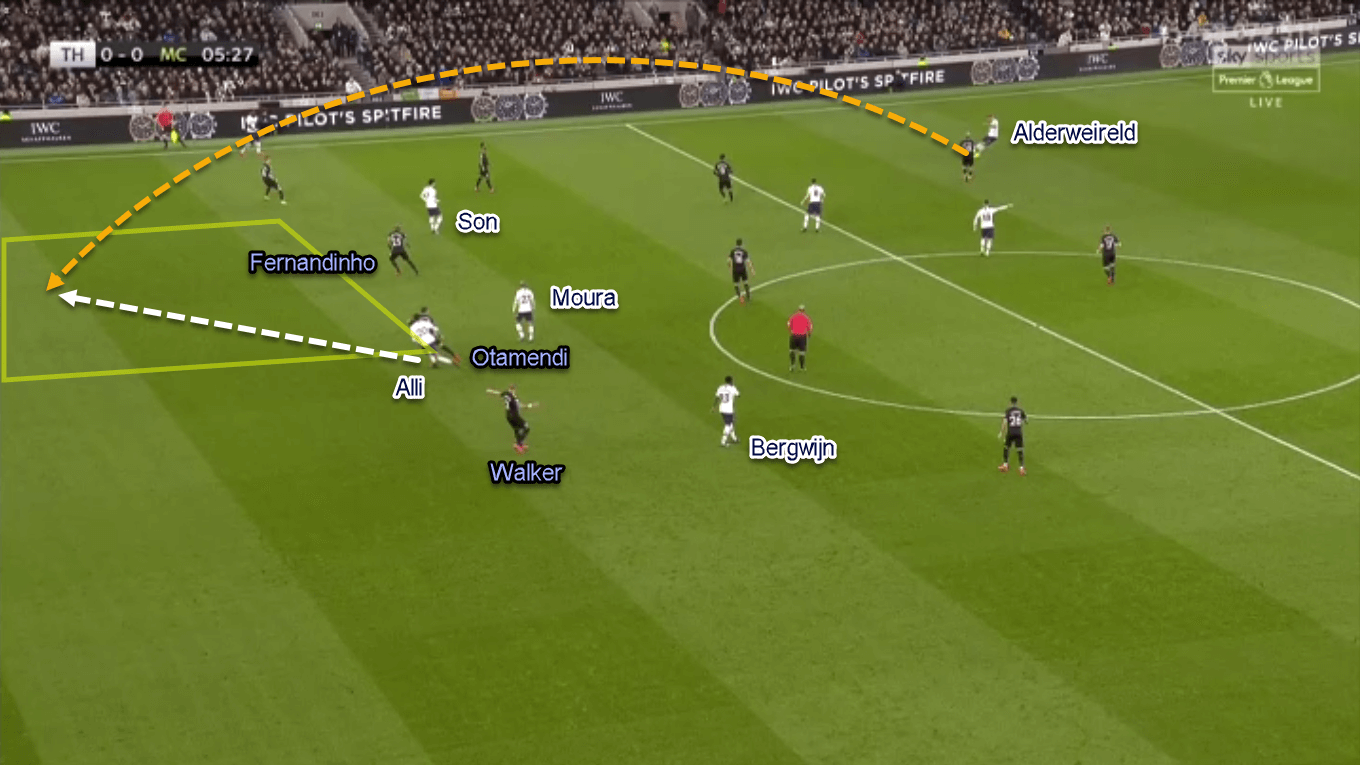
Not only via long passes, but Spurs also exploited the particular area with balls in behind slow-paced Fernandinho. To exploit this, Mourinho instructed his attackers to stay narrow and rotate their positions rather freely. As an example, Moura was allowed to drop a bit and force Fernandinho to follow him. Then, left-winger Bergwijn — who has moved inside and rotated with Alli — could attack the space left by the Brazilian.
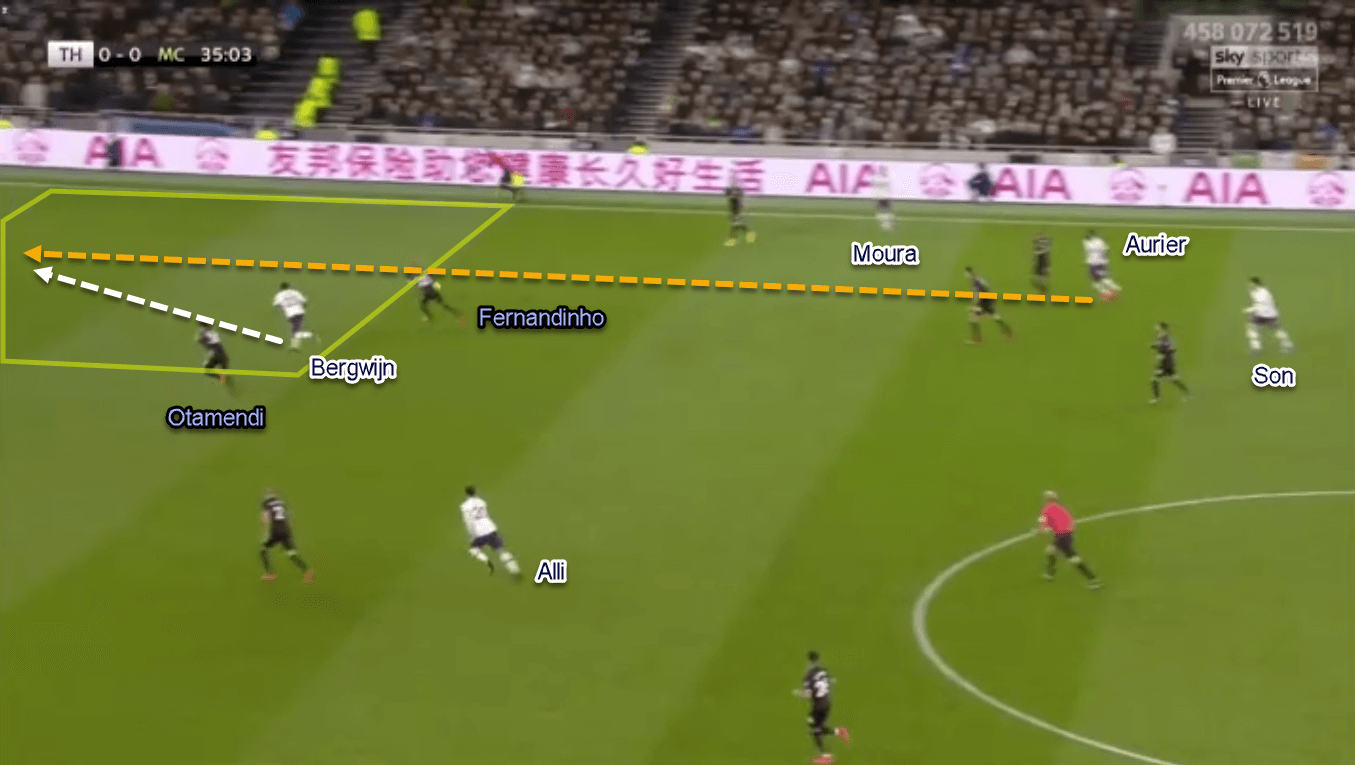
Offensive freedom led to dangerous unpredictability
Whenever Spurs had a solid possession time in City’s pitch, Mourinho kept his attackers narrow and allow them to interchange positions. The flanks then will be filled by the full-backs; with Aurier having more offensive duty than Tanganga. For a fact, such approach gave them the corner-kick where Bergwijn scored shortly after.
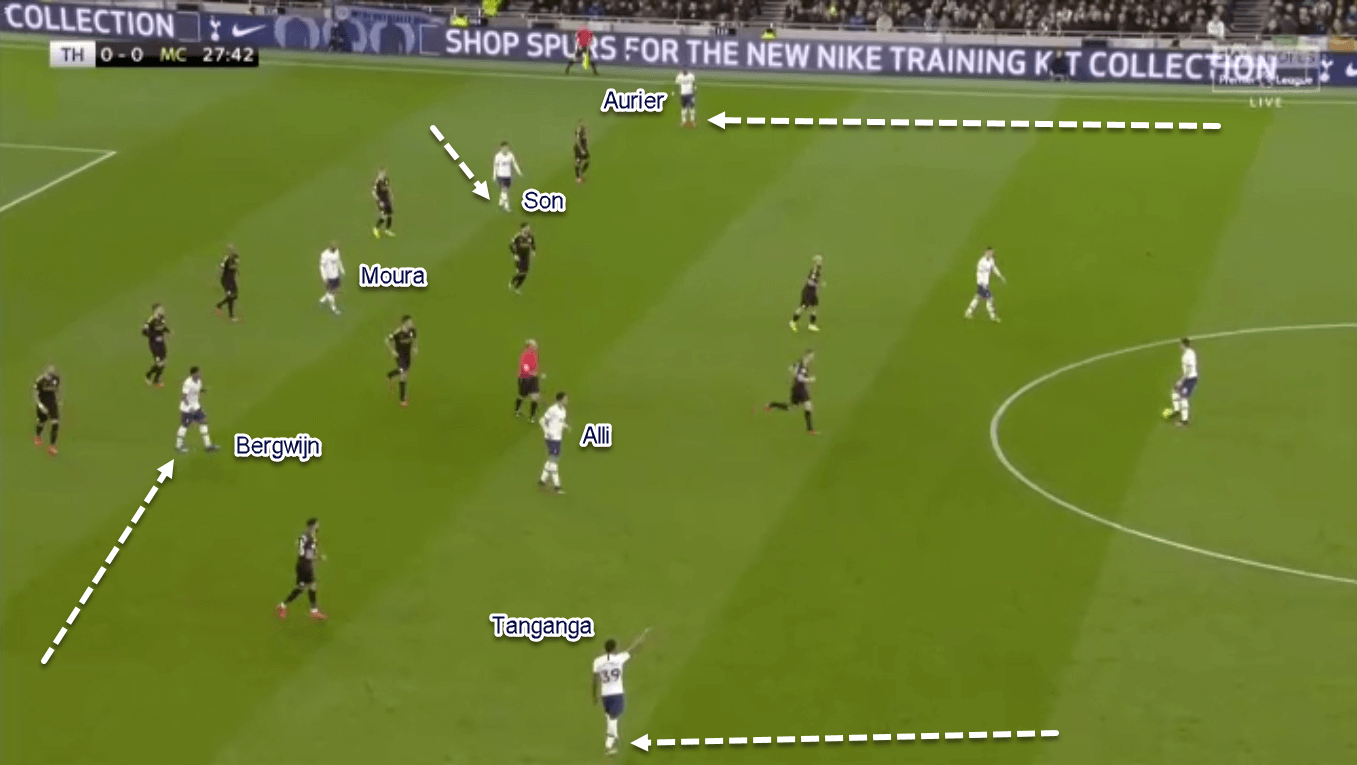
On top of that, by putting their forwards close to each other, Tottenham allowed them to make sharp combinations in tight areas. With attackers who are good in tight areas, as well as having a quick pace; Spurs were very unpredictable in front of the box. Again, it was proven by their winning goal; which came after a sharp combination in that area.
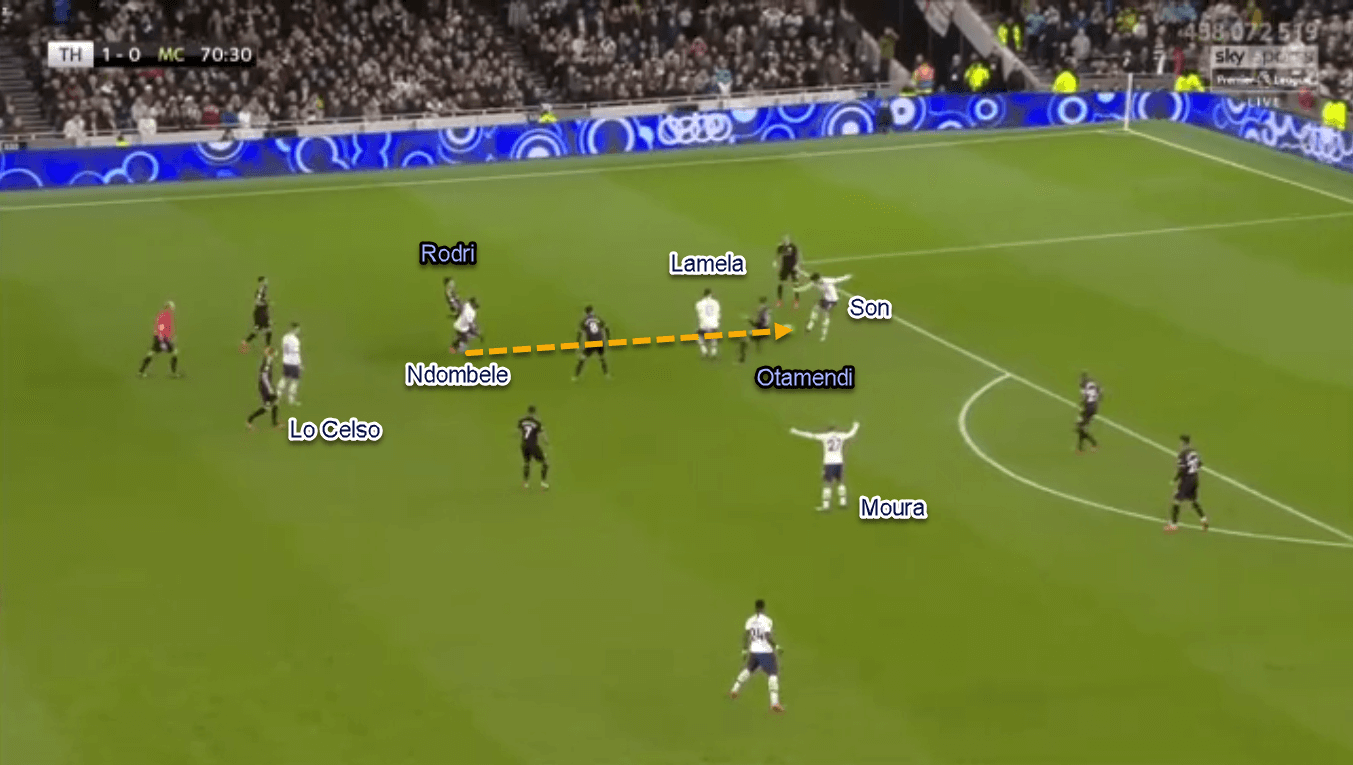
Spurs’ defensive adjustments in the second half
In the second half, Spurs adjusted their defensive approach a little bit. Realising that City’s forwards — particularly the left-sided ones — rarely make runs in behind, Mourinho allowed one of his defender to follow Agüero when dropping. This would prevent the Argentine space to receive the ball freely in between the lines; forcing City to play wide.
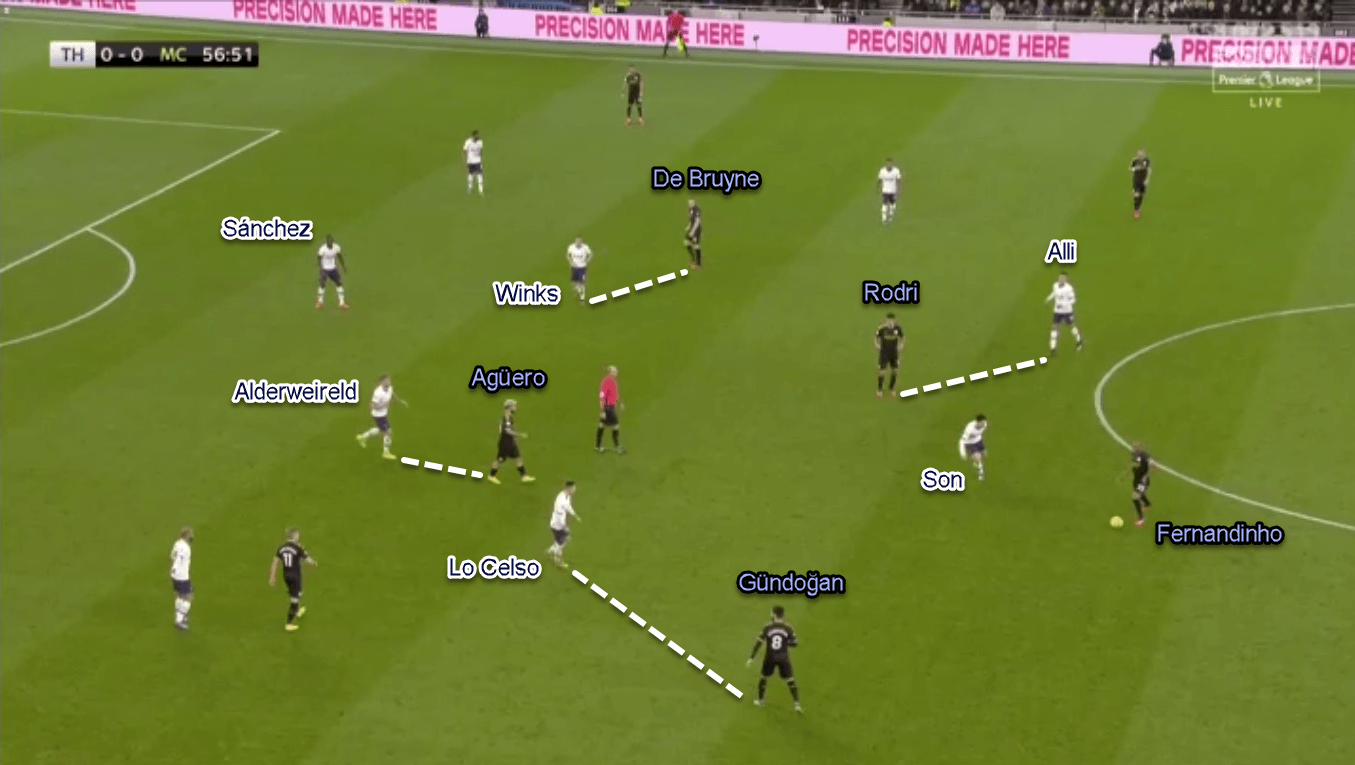
After Zinchenko’s dismissal, Spurs were more aggressive with their pressing. Such aggression was shown by numerous players to close down City’s attackers before reaching the final third. Agüero’s performance was quite decent actually; as proven by Sterling and Gabriel Jesus’ inability to replicate him in between the lines. Only Guardiola knows why Agüero didn’t play full 90 minutes.
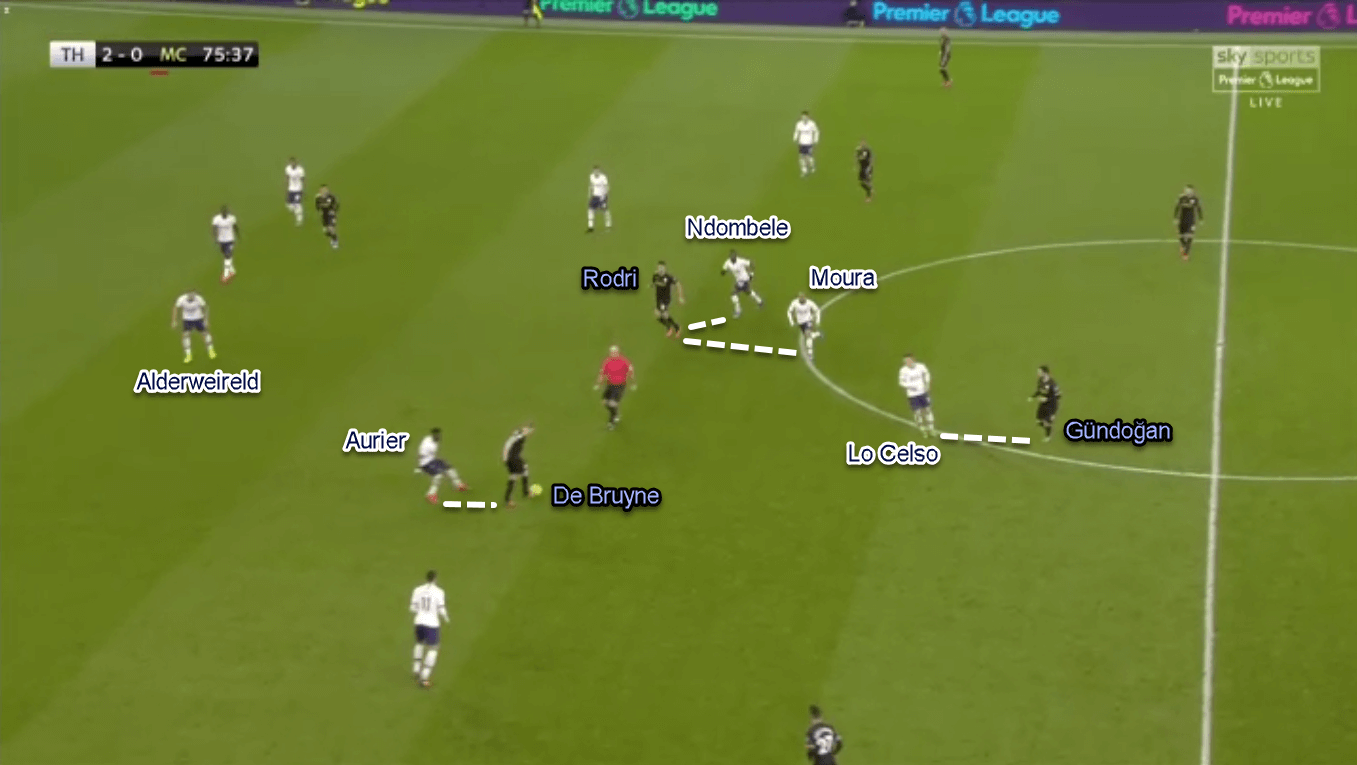
Conclusion
Two shots, two goals. That’s what Spurs achieved to win the game prior to Son’s last-minute saved attempt. Oppositely, City managed to make 18 shots yet scoring none. The statistics show a soaring-high 2.66 xG for the visitors, while the Lilywhites only managed a total of 0.6 xG. It’s fair to say that the score didn’t do justice to the Citizens.
However, football is played on the pitch; not on paper. Some may say Mourinho’s men were lucky in this match. Some again may say this is his classic masterclass put into the show. Despite everything, both managers show superb tactical creativity in this game. The only difference was their respective players’ effectiveness in front of the goal, as proven by the xG tally. Huge credits must be given to both Mourinho and Guardiola as Premier League football head into the winter break with such a dramatic encounter.
Onto the next one.





Comments